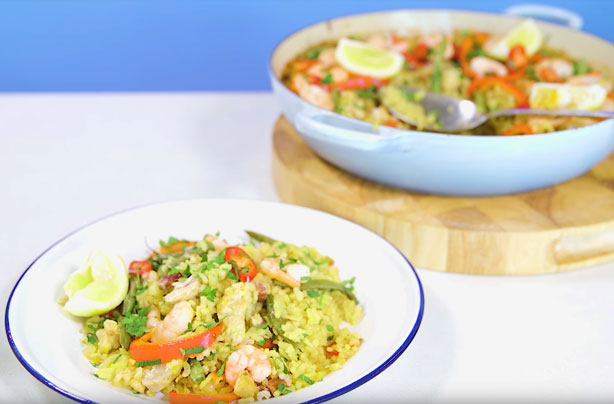Cambridge Diet Meal Replacement Plan
- Diet plans
We earn a commission for products purchased through some links in this article.
The Cambridge Diet is one of the most popular diets in the UK but is it the right plan for you?
The Cambridge diet, which was originally devised by Dr Alan Howard at Cambridge University in 1970, can promise rapid weight loss thanks to meal-replacement food packs that have all the recommended daily allowance of vitamins and minerals.
There are five steps to The Cambridge Diet, ranging from step one, called Sole Source (around 500 calories per day) to step five (1,500 calories per day). Each step includes at least one meal-replacement food pack, which could be a nutrition bar, soup, mousse or shake. The principle of the diet is that with the right amount of protein, carbohydrate, fat, very few calories and the recommended daily allowance of vitamins and minerals, your body gets all the nutrients it needs and uses its fat stores for energy, therefore burning fat. And because the diet is high protein, you don't lose muscle mass or have cravings, like on other diets.
If you feel inspired, read on to find out all about how the Cambridge Diet can work for you!
Read more: Low Carb Diet: Experience simple weight loss with this short-term diet
The Cambridge diet weight plan
You meet with a Cambridge Diet counsellor every week to buy food packs – you can only buy these from a registered and trained counsellor. You also meet to discuss your progress with the Cambridge Diet and talk about your issues and difficulties, if you have them. Some people talk to their counsellor about their emotional issues with food, weight and body image, other people just appreciate a few encouraging words – it's like having a diet coach.
Depending on what step you follow, you eat between three food packs per day (step 1, Sole Source) or one food pack with three meals and snacks per day (step 5), but this is still a balanced low-fat, low-calorie, lower carb diet. The step you start on depends on how much weight you have to lose and how quickly you want to lose it. All the steps involve eating less calories than usual, but step 1 and step 2 involve hardly any carbohydrates, which puts your body into a process called ketosis. Ketosis is when your body uses its fat stores for energy.

Getty Images
Who is the Cambridge diet good for?
Anyone who has a BMI of 26 or more, and if you have a difficult emotional relationship with food and/or a large amount of weight to lose. It's a good diet to do because you have support from a counsellor. For the 1st and 2nd step on the Cambridge Diet you have to fill out a medical form and inform your doctor. Plus every 4 weeks on the Sole Source step you give yourself a break and have a light meal, rather than just food packs.
What are the drawbacks of The Cambridge diet?
Like any diet, you need willpower and it can be hard to stick to if you're just doing the 1st step, Sole Source, but you will lose weight quickly, which normally gives people the incentive to stick to it. Some people find it hard to drink 8 large glasses of water a day. And you are not allowed to have chewing gum, diet drinks or tea and coffee with milk on the 1st and 2nd step of the programme. Even though there's a large variety of food packs, some people still don't like any of the flavours. It's very safe although there are a small minority of people who can't do the diet for health reasons.
The side-effects of ketosis are bad breath, lethargy for the first three days and headaches, but not everyone experiences this. Some people think it's expensive but you are replacing food with Cambridge Diet food packs and buying less food – so you may even save money on your weekly food bill.
The price of a set of weekly food packs starts at £50.40 a week if you're doing the first step of the programme. This includes three food packs a day and a one-to-one session with you Cambridge Weight Plan Consultant.
Read more: The best time to eat breakfast, lunch and dinner if you want to lose weight
Cambridge diet: best foods for weight loss
For step 1 (Sole Source) you only have 3 Cambridge Diet food packs, water, tea/coffee without milk, herb tea. You cannot have any other food, milk, alcohol, diet drinks or chewing gum. For step 2 you will have 3 Cambridge Diet food packs plus one low-fat, low-carbohydrate meal, such as cottage cheese salad or grilled chicken and steamed vegetables. You are allowed 1/5 pint of milk but you still have to have 8 large glasses of water and cut out alcohol. For steps 3 and 4 you have just two food packs, as well as a breakfast of 150 calories and main meal such as lunch or dinner.
Sample breakfast:Fruit smoothie and 3 rye crispbread with low-fat cream or cottage cheese

Arx0nt/Getty
Get the recipe: Blueberry and kiwi smoothie
Sample main meal: Prawn stir-fry and a small piece of fruit. For step 5 you have one food pack, three regular meals and one 100 calorie snack.

TI Media Limited
Sample lunch: Roast tomato and orange soup, a small granary roll filled with cottage cheese. A 100g pot of low-fat fromage frais

Banu Patel / EyeEm/Getty
Sample dinner: Paella with one portion of vegetables

Sample snacks: Two chocolate chip cookies.
Have you tried the Cambridge Diet? We'd love to hear from you! Just leave us a comment in the box below…
Cambridge Diet Meal Replacement Plan
Source: https://www.goodto.com/wellbeing/diets-exercise/cambridge-diet-67583